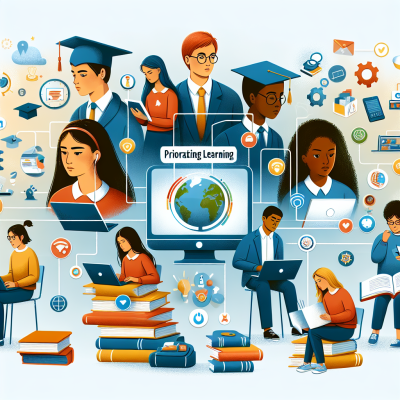
Prioritising Learning Over Technology
In today’s fast-evolving digital education landscape, educational technology—or EdTech—is more accessible and more advanced than ever. But with thousands of new tools and platforms hitting the market every year, many educators find themselves asking: Which EdTech truly supports student learning? In part 2 of his 3-part series, Dr Ralph Saubern invites educators and school leaders to take a step back and critically examine how they can put learning first when adopting new technologies in education.
The Pitfall of the Tech-First Mindset
Choosing EdTech solutions is often driven by market trends, peer recommendations, or the allure of “innovative” tools promising remarkable outcomes. However, Dr Saubern challenges this approach. He argues that a ‘technology-first’ mindset risks adopting tools that don’t align with a school’s teaching and learning goals.
Instead of asking, “What tech do we need?” educators should be asking, “What are our learning needs, and how can technology serve those needs?”
The Core Principle: Start With Learning
At the heart of Dr Saubern’s approach is a straightforward yet transformational principle: Start with learning, not technology. This means defining the learning objectives, pedagogy, and context before looking at tools and platforms.
This learning-first approach involves:
- Understanding the core teaching and learning challenges the school is trying to address.
- Evaluating whether technology is necessary—or if it will genuinely enhance current practices.
- Ensuring alignment between EdTech tools and curriculum goals.
- Considering teacher readiness, confidence and professional development needs.
Frameworks to Guide Better Decisions
To help schools make more intentional EdTech decisions, Dr Saubern recommends drawing on research-based frameworks that place pedagogical practice at the core. Tools like the TPACK (Technological Pedagogical Content Knowledge) and SAMR (Substitution, Augmentation, Modification, Redefinition) models can guide educators in evaluating how technology supports or transforms learning.
These models encourage educators to reflect on:
- How well the technology integrates with content and pedagogy.
- Whether it enables new learning activities that were previously inconceivable.
- How it affects teacher-student interaction and assessment.
The SAMR Model in Action
For example, using a presentation software instead of a chalkboard might fall under ‘Substitution’, where there is no functional improvement. In contrast, using interactive simulation software to explore scientific concepts could fall under ‘Redefinition’, significantly transforming the learning experience.
By consciously applying these frameworks, educators can make informed decisions that enhance both teaching methods and student outcomes.
Fostering Reflection and Collaboration
Another key element in adopting a learning-first EdTech approach is fostering a culture of professional reflection and collaboration. Dr Saubern highlights the importance of engaging teachers in meaningful conversations about the goals of learning and the role technology should play in achieving them.
Important questions to ask include:
- What evidence do we have that this tool improves learning?
- How does the technology support our school’s pedagogical values?
- Are we involving students in evaluating the effectiveness of the tech?
Such reflective practices ensure that technology adoption is not just a top-down decision but a collaborative effort that values the insights of classroom teachers and students alike.
Developing a Whole-School Strategy
For a truly effective learning-first EdTech implementation, a whole-school strategic approach is essential. This means aligning technology purchases and usage with the broader educational vision and involving all stakeholders—teachers, leaders, students, parents, and even IT staff—in the decision-making process.
Key components of this strategy may include:
- A clear vision that defines how technology supports learning outcomes.
- An investment in professional learning and digital literacy for teachers.
- Regular evaluation of tools in practice—not just initial adoption.
- Developing internal capacity to assess, support, and adapt EdTech use as needed.
Ultimately, EdTech should be seen not as a universal fix or stand-alone solution, but as one piece—albeit a powerful one—of the learning puzzle.
Conclusion: Reclaiming the Purpose of EdTech
Dr Ralph Saubern’s insights serve as an important reminder: the true purpose of EdTech is not to dazzle with novelty, but to deepen and improve the learning experience for students. By reframing the conversation around learning outcomes rather than technological breakthroughs, schools can avoid costly missteps and instead build digital ecosystems that are meaningful, sustainable, and aligned with their educational mission.
As we continue to innovate and explore emerging technologies—from AI to immersive learning environments—the question remains: Are we using EdTech to serve learning, or are we bending learning to fit the tool?
Only through a conscious, research-informed, and learner-centered approach can we truly harness the potential of technology in education.


Leave a Reply